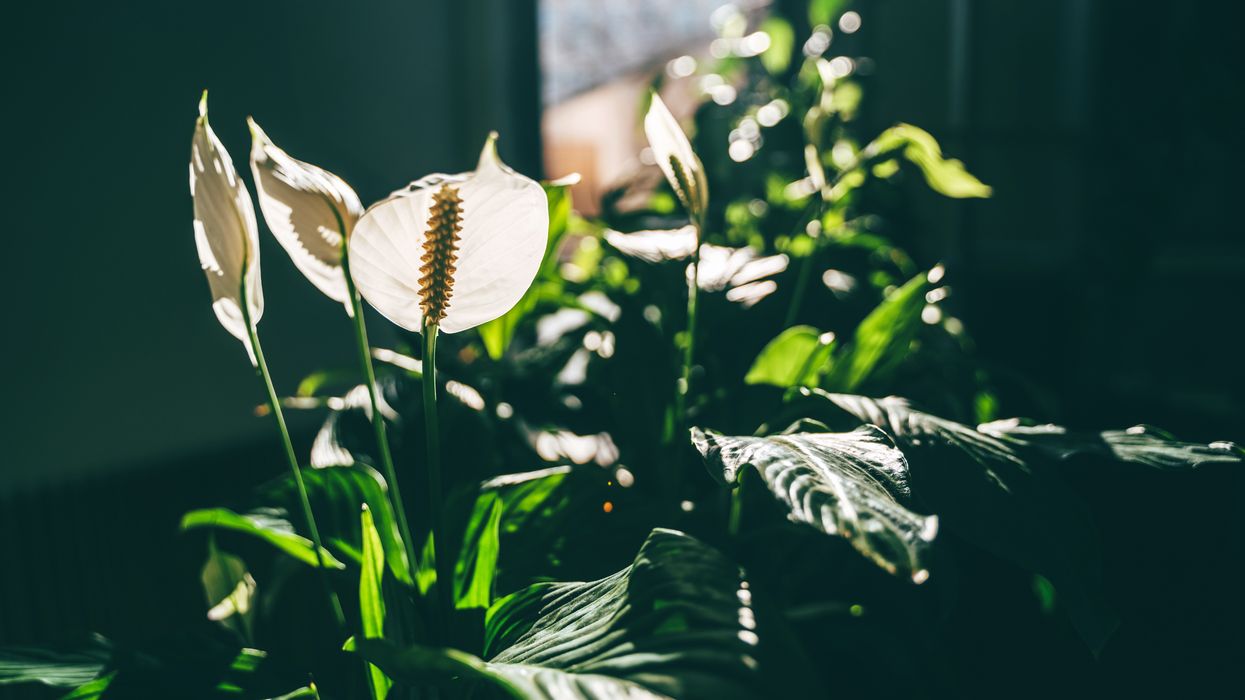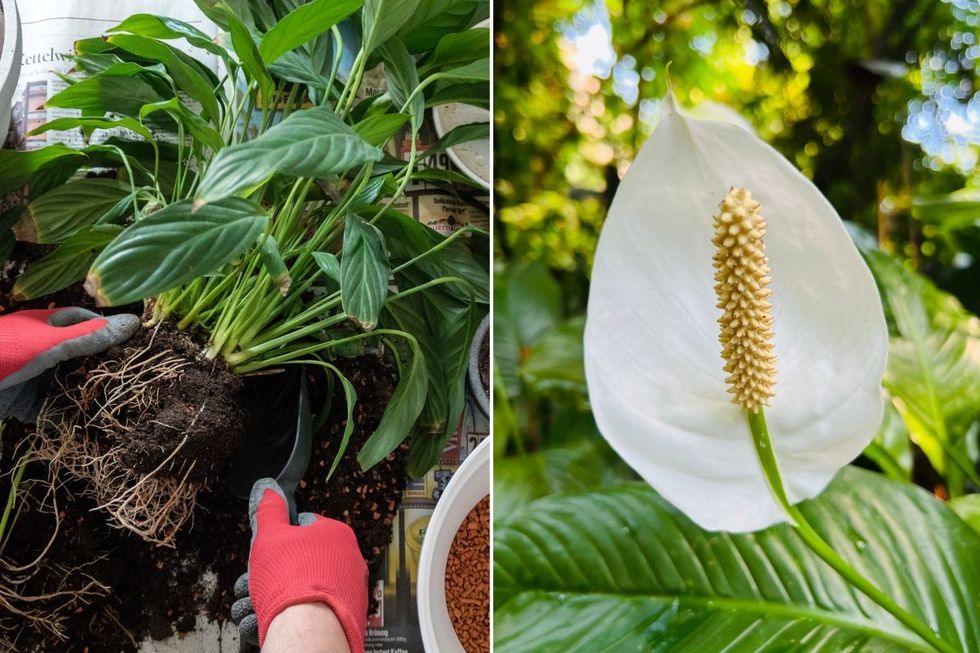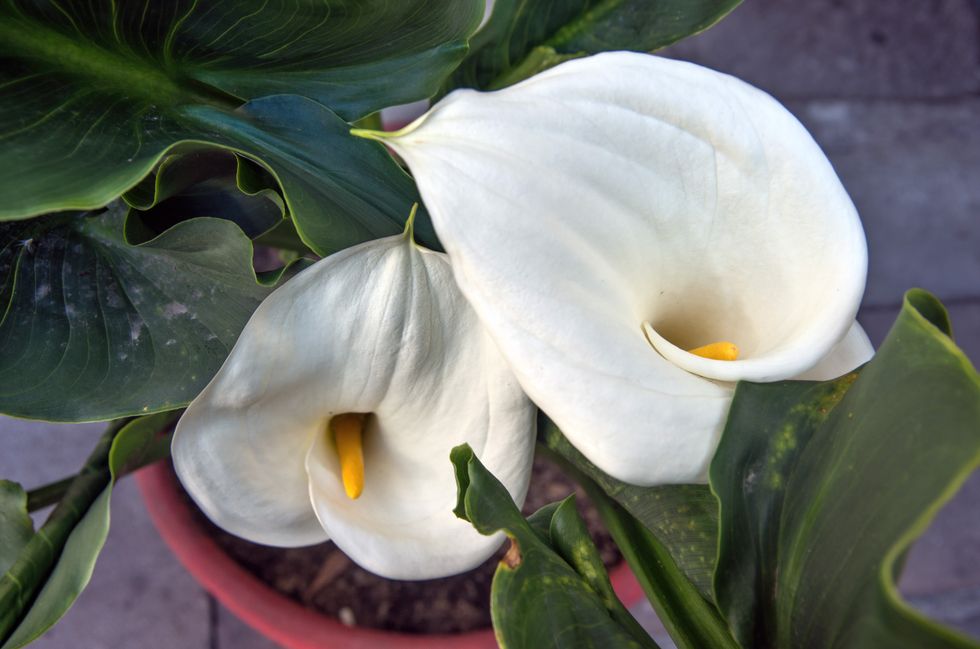Peace lily care: The best ingredients to feed your indoor plant for 'bigger' and 'more frequent' flowers

Waterlogging is a major cause of houseplant deaths | GETTY

GB News is sharing everything you need to know about how to help the plants in your home thrive.
This week, gardeners have shared their top tips for encouraging peace lilies to bloom after a flower drought.
Don't Miss
Most Read
Latest
Bringing plants into the home adds a note of freshness to all types of interiors, but the plants need consistent attention to continue looking their best.
Peace lilies are a popular pick for plant lovers because are low-maintenance and produce showy white blooms.
Many find that after the first blooms fade, however, it can be a while before more flowers appear.
Victoria Cummins, senior editor at PlantWhisperer and gardening expert, has acquired a few tricks through her work in permaculture to help coax the plants into bloom.

Repotting your plant could promote new growth
|GETTY
In a conversation with GB News, the expert said the plants can thrive even if they haven't produced blooms in years.
"To encourage peace lilies to bloom beautifully, even after a flower drought, I recommend placing them in a spot with bright but indirect light, like near an east-facing window," explained the expert.
"Harsh direct sun can damage their lush leaves. Consistent moisture is key. Let the top inch of soil dry between waterings and always use lukewarm H2O to avoid shocking them."
The expert also encourages using ingredients from nature’s pantry to give peace lilies a growth spurt.
"I’m a big fan of monthly doses of balanced, water-soluble fertiliser during their spring and summer growth spurts," she said.
"This extra nourishment promotes bigger, more frequent flowers.
The optimal temperature for peace lilies
As long as indoor temperatures don't dip too low, peace lilies will generally be happy.
"The cosiest room for your potted peace lily is one that maintains comfy humidity between 40-60 per cent and temperatures in the 65-85°F per cent Fahrenheit sweet spot," said Cummins.
"Bonus points if you can station it away from drafty windows or drying heat vents."
Michael Clarke, landscape architect and horticulturalist and the founder of Yardwork, an online plant nursery and landscaping platform, stressed that lighting is key if you want the plant to rebloom after years of inactivity.
"Peace lilies flower when they receive bright, indirect light," said Clarke. "If it hasn’t bloomed for several years and you want to encourage flowers, move it into bright, indirect light and fertilise with a balanced fertiliser.
"If you’re able to get Gibberellic Acid, a hormone that promotes flowering, this will greatly increase the chances of flowering."
Alternative fertilisers for peace lilies include coffee grounds and Epsom salts, diluted in water.
"Two tablespoons of Epsom salts can be added to a gallon of water and used to water peace lilies once a month," said Clarke.
"Coffee grounds can be sprinkled on top of your soil once every couple of months for added nitrogen and a natural pest and fungal repellent."
LATEST DEVELOPMENTS:

Peace lilies that have not bloomed in years can still produce flowers
| GETTYHow to revive a wilting plant
If your peace lily starts dropping dramatically, Cummins' go-to revival method is a refreshing lukewarm shower, letting all the water drain away, and returning to its usual bright indirect light.
"Nine times out of ten, perky foliage returns within hours!” she explained.
"Finally, prevent cramped roots from stunning flowering by repotting your peace lily planter every year or two into a roomier container with drainage holes and high-quality potting mix. Your plant bestie will thank you with an abundance of spathes!"
Like Cummins, Clarke is a firm believer that peace lilies on the brink of death can be brought back to life with a little help. He uses cool water, however.
"One way to do this is to place your plant in the sink and water for at least one minute with cool, filtered water, allowing the soil to drink excess water from the bottom drainage holes," the expert explained.
"Peace lilies, in particular, are able to revive themselves after being wilted for days. After being given thorough watering, they can perk up to normal within just a few hours."










